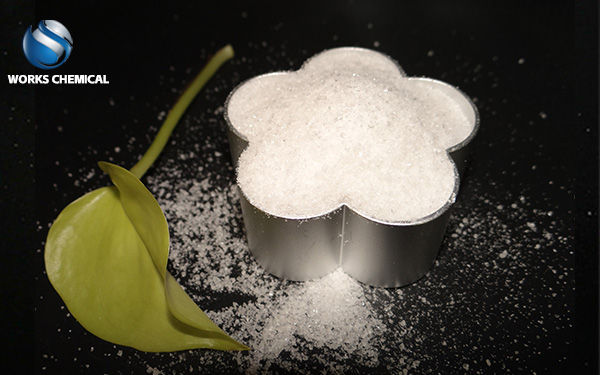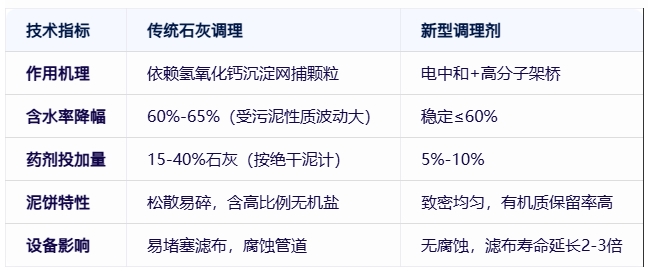
In the field of municipal sludge deep dehydration, the replacement of lime by new sludge conditioner has become an important direction of technological upgrading, which is not only related to the improvement of dehydration efficiency, but also involves multiple innovations such as environmental benefits, cost optimization and equipment protection. The following is a combination of technical mechanisms and empirical data to give you an in-depth analysis of this alternative trend:

Technical iteration: Transition from lime to new conditioner

Second, environmental benefits: from "pollution transfer" to "source reduction"
Secondary pollution control
Lime reaction produces a large amount of Ca(OH)₂, the sludge increment is more than 25%, and the transportation and disposal pressure is increased.
The new conditioner does not introduce excess ions, and the COD of the filtrate is reduced by 30%-50%, directly reducing the water load.
Carbon reduction contribution
Lime dehydration requires high temperature calcination (carbon emissions of about 850kg CO₂/ ton CaO), and the energy consumption of the new conditioner production is reduced by 60%.
After sludge reduction, the calorific value of incineration is increased by 15%-20%, and the energy utilization rate is improved.
Economic Revolution: Cost Reduction and long-term Benefits

Four, the future trend: intelligent and customized
Online monitoring: Through real-time feedback of sludge moisture content and pH value, dynamic adjustment of the dosage of the regulator, the error is controlled within ±1%.
Formula customization: for industrial wastewater sludge (such as printing and dyeing, electroplating), domestic sludge and other different properties, the development of special conditioning agents, to achieve "one mud one dose".
Carbon Footprint Management: Full Life Cycle Assessment (LCA) tools optimize the conditioner production chain and drive carbon neutrality in the sludge treatment industry.
Conclusion: The replacement of lime by new conditioner is not only an upgrade of technical route, but also an inevitable choice for municipal sludge treatment to be green, efficient and sustainable. With technology iteration and cost reduction, this trend will accelerate penetration during the "14th Five-Year Plan" period and reshape the sludge treatment industry pattern.